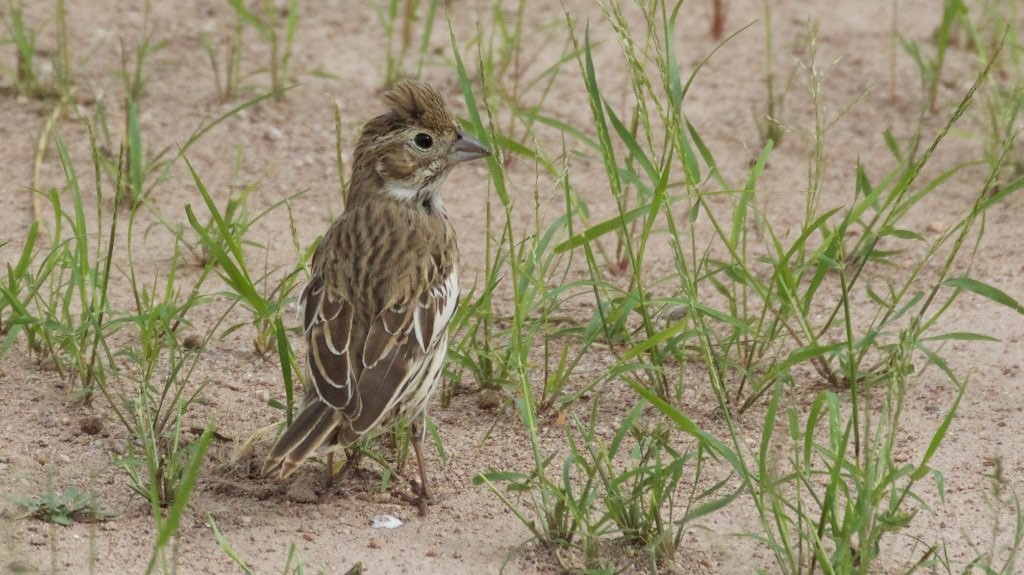Lark Bunting
A species of Lark Buntings Scientific name : Calamospiza melanocorys Genus : Lark Buntings
Lark Bunting, A species of Lark Buntings
Botanical name: Calamospiza melanocorys
Genus: Lark Buntings
Content
Description People often ask General Info
Description
Lark buntings are small songbirds, with a short, thick, bluish bill. There is a large patch of white on the wings and they have a relatively short tail with white tips at the end of the feathers. Breeding males have an all black body with a large white patch on the upper part of the wing. Nonbreeding males and females look similar and are grayish brown with white stripes. Measurements: Length: 5.5-7.1 in (14-18 cm) Weight: 1.3-1.5 oz (35.3-41.3 g) Wingspan: 9.8-11.0 in (25-28 cm) 
Size
18 cm (7 in)
Colors
Brown
Black
Bronze
Gray
White
Life Expectancy
4 years
Nest Placement
Ground
Clutch Size
2 - 5 eggs
Incubation Period
1 - 2 broods
Number of Broods
10 - 12 days
Nestling Period
7 - 9 days
Feeding Habits
Lark Bunting predominantly consume invertebrates in the warmer months and seeds in colder seasons, altering their diet to match seasonal availability. Preferring to forage on the ground, lark Bunting demonstrate agility by stalking and chasing prey, with females exhibiting more aerial pursuit. Their diet comprises seeds from grasses, forbs, grains, and occasional fruits, as well as a variety of insects and other arthropods.
Habitat
Lark Bunting thrives in the grasslands of North America, particularly favoring native prairie settings in central regions for breeding. Their habitats are characterized by a diverse mix of vegetation, including various grasses and shrubs, which provide optimum breeding conditions. In winter, lark Bunting becomes somewhat nomadic, frequenting open landscapes and occasionally visiting man-made environments in search of food.
Nest Behavior
Both sexes of lark Bunting collaborate in nest construction. Females scrape a preferred nest location with their feet, timing nest-building, egg-laying, and providing parental care until the young fledge.
Nest Characteristics
The lark Bunting builds a nest in a small ground depression concealed by shrubs or grass, using grass stalks, roots, and stems, lined with fine grasses or hair, measuring around 3.7 inches wide and 1.5-3 inches tall.
Dite type
Insectivorous
People often ask
General Info
Feeding Habits
Bird food type
Bird Feeder Type

Ground

Platform
Behavior
Lark Bunting exhibit a variety of behaviors linked to their life cycle and environment. Daily activities include singing from perches or during flight displays, where males rapidly ascend then descend while singing. They are highly territorial, especially before female arrival, using unique songs and physical signals to assert dominance. This aggression also extends to defending nesting areas against intruders. After breeding, lark Bunting transition from solitary territory holders to forming flocks for migration. They adapt to different elevations and are active both day and night during these movements, showcasing their versatility in habitat interaction.
Distribution Area
The lark bunting is the most prevalent of the passerine species found in the grasslands of North America. Their breeding habitat is prairie regions in central Canada and the mid-western United States. These birds migrate in flocks to winter southern Texas, Arizona and the high plateau of northern Mexico in the fall. 
Species Status
Not globally threatened.
Scientific Classification
Phylum
Chordates Class
Birds Order
Perching birds Family
New world sparrows Genus
Lark Buntings Species
Lark Bunting 